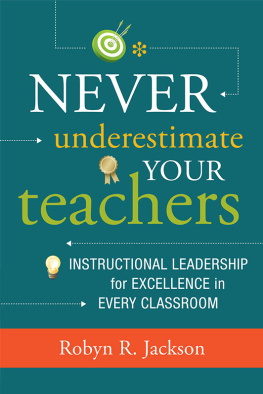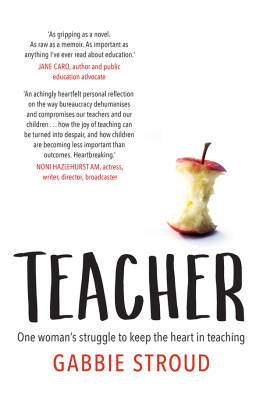Elizabeth Green - Building a Better Teacher: How Teaching Works (And How to Teach It to Everyone)
Here you can read online Elizabeth Green - Building a Better Teacher: How Teaching Works (And How to Teach It to Everyone) full text of the book (entire story) in english for free. Download pdf and epub, get meaning, cover and reviews about this ebook. year: 2014, publisher: W. W. Norton & Company, genre: Science. Description of the work, (preface) as well as reviews are available. Best literature library LitArk.com created for fans of good reading and offers a wide selection of genres:
Romance novel
Science fiction
Adventure
Detective
Science
History
Home and family
Prose
Art
Politics
Computer
Non-fiction
Religion
Business
Children
Humor
Choose a favorite category and find really read worthwhile books. Enjoy immersion in the world of imagination, feel the emotions of the characters or learn something new for yourself, make an fascinating discovery.
- Book:Building a Better Teacher: How Teaching Works (And How to Teach It to Everyone)
- Author:
- Publisher:W. W. Norton & Company
- Genre:
- Year:2014
- Rating:3 / 5
- Favourites:Add to favourites
- Your mark:
Building a Better Teacher: How Teaching Works (And How to Teach It to Everyone): summary, description and annotation
We offer to read an annotation, description, summary or preface (depends on what the author of the book "Building a Better Teacher: How Teaching Works (And How to Teach It to Everyone)" wrote himself). If you haven't found the necessary information about the book — write in the comments, we will try to find it.
A 2014 New York Times Book Review Notable Book
Weve all had great teachers who opened new worlds, maybe even changed our lives. What made them so great?
Building a Better Teacher introduces a new generation of educators exploring the intricate science underlying their art. A former principal studies the countrys star teachers and discovers a set of common techniques that help children pay attention. Two math teachers videotape a year of lessons and develop an approach that has nine-year-olds writing sophisticated mathematical proofs. A former high school teacher works with a top English instructor to pinpoint the key interactions a teacher must foster to initiate a rich classroom discussion. Through their stories, and the hilarious and heartbreaking theater that unfolds in the classroom every day, Elizabeth Green takes us on a journey into the heart of a profession that impacts every child in America.
What happens in the classroom of a great teacher? Opening with a moment-by-moment portrait of an everyday math lessona drama of urgent decisions and artful maneuversBuilding a Better Teacher demonstrates the unexpected complexity of teaching. Green focuses on the questions that really matter: How do we prepare teachers and what should they know before they enter the classroom? How does one get young minds to reason, conjecture, prove, and understand? What are the keys to good discipline? Incorporating new research from cognitive psychologists and education specialists as well as intrepid classroom entrepreneurs, Green provides a new way for parents to judge what their children need in the classroom and considers how to scale good ideas. Ultimately, Green discovers that good teaching is a skill. A skill that can be taught.
A provocative and hopeful book, Building a Better Teacher shows that legendary teachers are more than inspiring; they are perhaps the greatest craftspeople of all.
Elizabeth Green: author's other books
Who wrote Building a Better Teacher: How Teaching Works (And How to Teach It to Everyone)? Find out the surname, the name of the author of the book and a list of all author's works by series.












